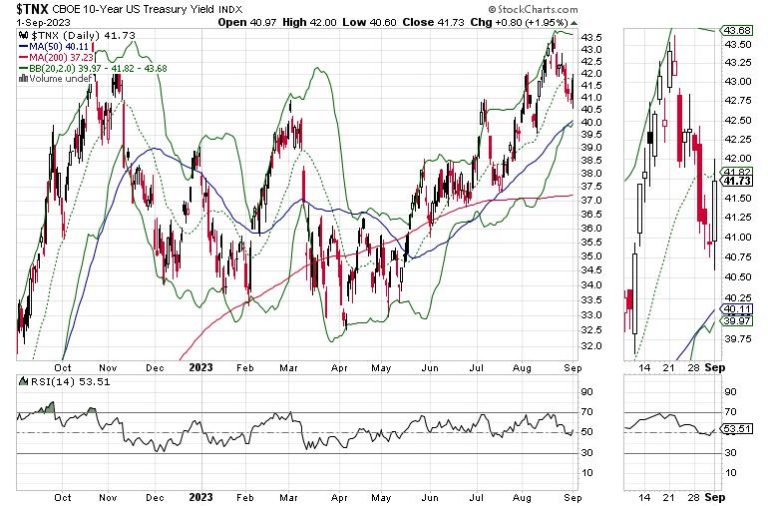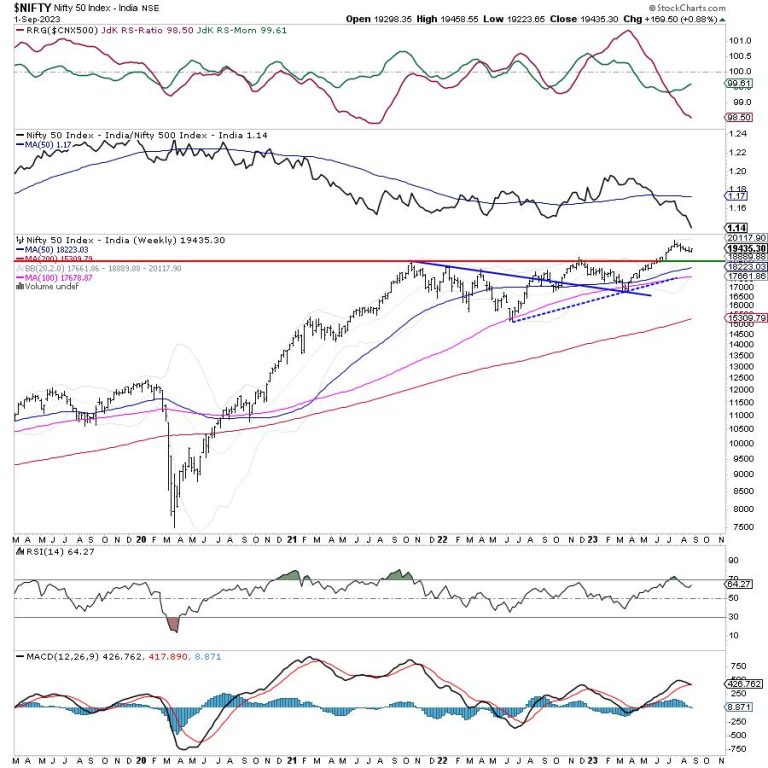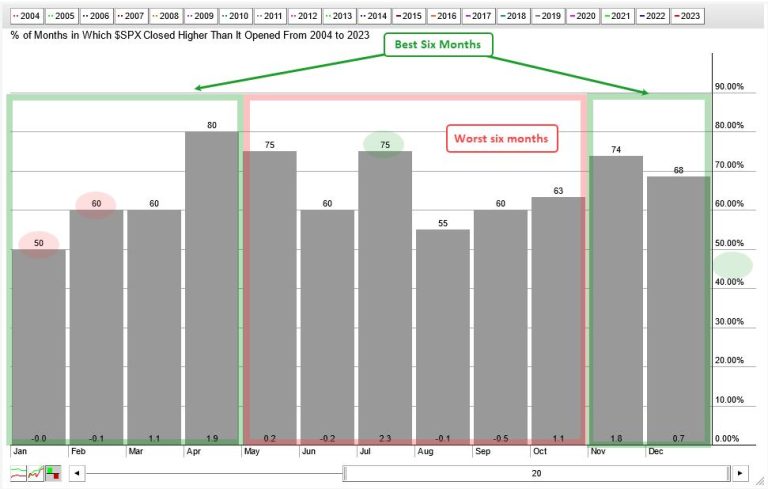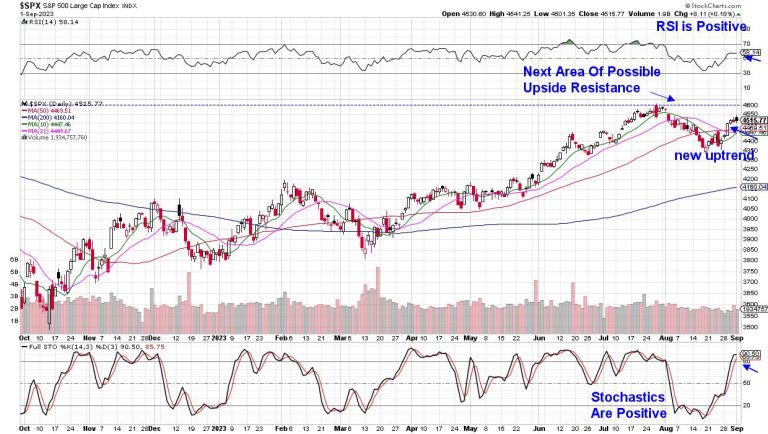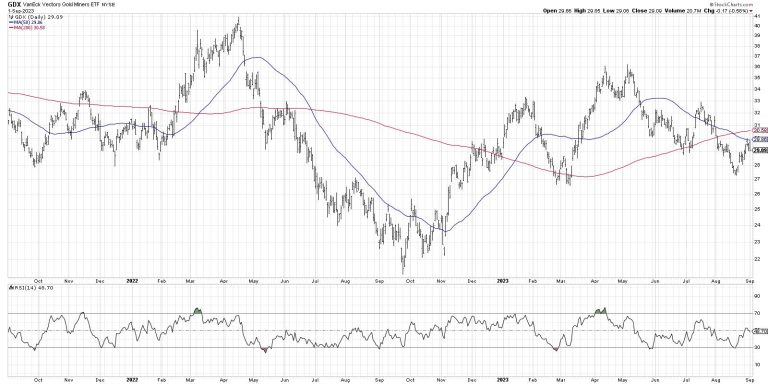The dog days of August are mercifully over. And as Wall Street gets back to work, new trends are emerging which could influence what the stock market does for the rest of the year.
Here are the macro crosscurrents to sort through:
The Fed is on the bubble as some Fed governors want to pause the rate hikes, while others want to push rates higher;The jobs market seems to be cooling;The bond market is focused on inflation, but is off its worse levels as it ponders what the Fed will do next, whether the job market is going to get weaker, and whether the price of oil will upset the apple cart;Stocks are working on putting in a credible bottom; andThe oil market looks set to erupt.
Altogether, these variables suggest the fourth quarter has the potential to be a potentially profitable quarter for investors who can discern where the smart money is flowing and successfully follow it.
Bond Volatility Increases as Data Shifts Rapidly
The bond market’s inflation fears eased over the last few weeks ,but the most recent round of purchasing manager data (ISM and PMI), suggesting festering inflation in the manufacturing sector, erased the glee generated by the apparent cooling of the jobs market via lower-than-expected JOLTS and ADP data, which was boosted by the rise in the unemployment rate and a tame payrolls report.
The U.S. Ten Year Note Yield (TNX) reversed its downward move toward 4% in response to the purchasing manager’s data, which was interpreted as a picture of stagflation. The yield is nervously trading between its 20- and 50-day moving averages.
Smart Money Roundup: Watching NVDA Effect on QQQ
Calls for the death of the so-called AI bubble may have been premature, although the jury is still out for the sector in the short-term. Certainly, the action in AI bellwether Nvidia’s shares (NVDA) is an important metric to keep an eye on.
The stock’s recent volatility suggests that investors are thinking about what comes next, although the company continues with its bullish guidance. On the other hand, the slowly developing downslope in the Accumulation/Distribution (ADI) line is cautionary, as it suggests short sellers are starting to bet on lower prices for the stock.
On Balance Volume (OBV) is in better shape, which suggests that a sideways pattern or a steady uptrend is the most likely path for the stock after the consolidation. You can see the NVDA effect reflected in the shares of the Invesco Nasdaq 100 Trust (QQQ) which is also consolidating. Support for QQQ is at $370.
Oil is Getting Hot
Tech is consolidating, but the smart money is moving into oil. You can see that in the bullish breakout of West Texas Intermediate Crude (WTIC), which is now above $85. Recall my May 2023 article, titled “Never Short a Dull Market,”, where I predicted that tight oil supplies were in the works and that the odds of higher prices were better than even.
And that’s exactly what’s happened. In the last three weeks, the U.S. Energy Information Agency (EIA) has reported a nearly 30 million barrel drawdown in U.S. oil inventories. Moreover, there are two coincident developments unfolding, which are likely to further decrease supplies:
OPEC + is likely to maintain its current production cuts in place for at least another month; andThe U.S. is quietly refilling its Strategic Petroleum Reserves.
These two factors, combined with stable-to-possibly-rising consumer demand for gasoline, and perhaps a rise in demand for heating oil as the weather turns cooler, are likely to keep prices on an upward trajectory for the next few weeks to months, and perhaps longer.
Expressed in more investor-accessible terms, you can see the shares of the U.S. Oil Fund ETF (USO) have broken out above the $75 resistance level, with excellent confirmation from a rise in the Accumulation/Distribution (ADI) and On Balance Volume (OBV) indicators as short sellers step aside (ADI) and buyers move in (OBV).
The bullish sentiment in oil also includes the oil stocks including the Van Eck Oil Services ETF (OIH), which is nearing its own breakout. This is due to the rise in global exploration, which has been steadily developing over the last twelve months, but which the market has mostly ignored, despite CEO comments of an oil service “super cycle” unfolding.
Things are happening fast. Oil, tech, housing, bonds, are all making their move. What’s your plan of action in this market? Join the smart money at Joe Duarte in the Money Options.com. You can have a look at my latest recommendations FREE with a two week trial subscription. You can also review the supply demand balance in the oil market and what the future may hold here. And if you’re a Tesla (TSLA) fan, I’m reviewing some interesting developments in the stock, which you can review free of charge here.
Breadth Recovery Shows Staying Power
Last week, I noted the worst may be over in the short term for stocks, as the market’s breadth is showing signs of resilience. This bullish trend is showing some staying power, as the New York Stock Exchange Advance Decline line moved above its 50-day moving average while maintaining its position above the 200-day moving averages. Another bullish sign is that RSI is nowhere near overbought, which means the rally still has legs.
On the other hand, the Nasdaq 100 Index (NDX) ran into resistance at the 15,600 area, where there is a moderate size cluster of Volume-by-Price bars (VBP) offering a bit of turbulence, as investors who bought the recent top are trying to get out “even”. Accumulation/Distribution (ADI) and On Balance Volume (OBV), may have bottomed out, but are showing some short-term weakness.
The S&P 500 (SPX) is acting in a similar way, although it remained above 4500, but above 4350, and it its 20-day and its 50-day moving averages. ADI is flat, but OBV is improving as investors put money to work in the oil and related sectors.
VIX Remains Below 20
VIX has been a bright point in the market for the last couple of weeks, as it has failed to rally above the 20 area. This is good news, as a move above 20 would be very negative, signaling that the big money is finally throwing in the towel on the uptrend.
When the VIX rises, stocks tend to fall, as rising put volume is a sign that market makers are selling stock index futures to hedge their put sales to the public. A fall in VIX is bullish, as it means less put option buying, and it eventually leads to call buying, which causes market makers to hedge by buying stock index futures. This raises the odds of higher stock prices.
Liquidity Remains Stable
Liquidity is stable. The Secured Overnight Financing Rate (SOFR), which recently replaced the Eurodollar Index (XED) but is an approximate sign of the market’s liquidity, just broke to a new high in response to the Fed’s move. A move below 5.0 would be more bullish. A move above 5.5% would signal that monetary conditions are tightening beyond the Fed’s intentions; that would be very bearish.
To get the latest information on options trading, check out Options Trading for Dummies, now in its 4th Edition—Get Your Copy Now! Now also available in Audible audiobook format!
#1 New Release on Options Trading!
Good news! I’ve made my NYAD-Complexity – Chaos chart (featured on my YD5 videos) and a few other favorites public. You can find them here.
Joe Duarte
In The Money Options
Joe Duarte is a former money manager, an active trader, and a widely recognized independent stock market analyst since 1987. He is author of eight investment books, including the best-selling Trading Options for Dummies, rated a TOP Options Book for 2018 by Benzinga.com and now in its third edition, plus The Everything Investing in Your 20s and 30s Book and six other trading books.
The Everything Investing in Your 20s and 30s Book is available at Amazon and Barnes and Noble. It has also been recommended as a Washington Post Color of Money Book of the Month.
To receive Joe’s exclusive stock, option and ETF recommendations, in your mailbox every week visit https://joeduarteinthemoneyoptions.com/secure/order_email.asp.





